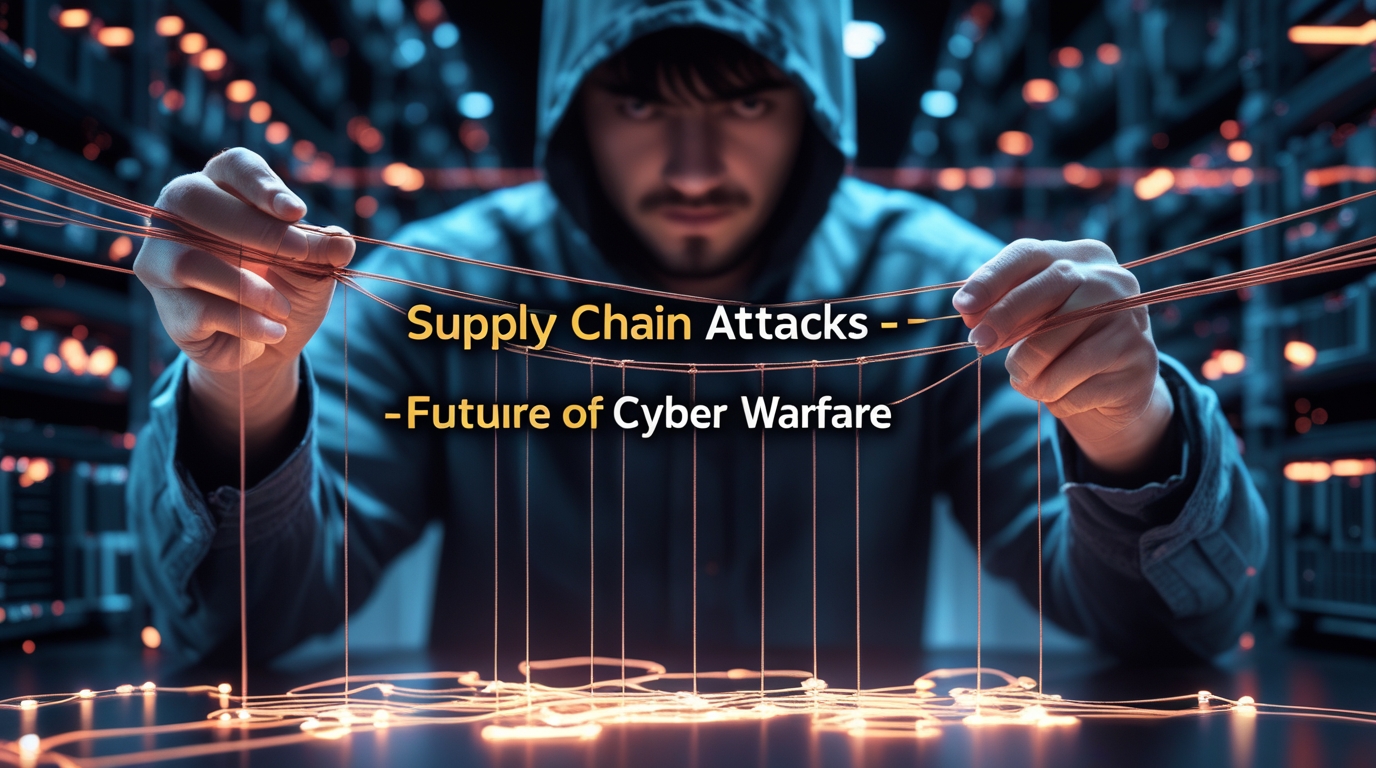You can build a ten-foot-thick steel door. You can put a hundred guards in front of it. But if the enemy convinces the architect to put a secret backdoor into the blueprints, your security is a joke. That’s exactly what’s happening in cybersecurity right now. It’s called a supply chain attack, and it’s how the real pros hack everyone at once. They don’t waste time trying to pick your lock. They go after the company that makes the locks.
Think about it. You use software from hundreds of vendors. An accounting tool. A project management app. A system for monitoring your own network. You trust them. So when they send you a routine software update, you install it without a second thought. What if that update was poisoned? You just willingly installed the hacker’s backdoor yourself. You did their job for them. This isn’t science fiction. This is how Russia hacked the U.S. government through a company called SolarWinds. They didn’t attack the Pentagon. They attacked an IT tool the Pentagon trusted, and walked right in the front door.
Your Security is Only as Strong as Your Dumbest Vendor:
This is the terrifying new math of cybersecurity. It doesn’t matter how strong your defenses are. Your entire security posture can be destroyed by a small software company you’ve never heard of that has lousy security practices.
You might have a world-class team. But does the 20-person startup that built your HR portal? Probably not. A hacker finds the weakest company in your entire digital supply chain. They break into them. Then they use that access to quietly jump into your network. It’s like a burglar who doesn’t try your house. They break into your neighbor’s place, cut a hole in the connecting wall, and clean you out.
This is a force multiplier for hackers. Why break into one company at a time when you can break into one and get a thousand for free?
The SolarWinds Playbook:
Let’s break down how this actually works. The SolarWinds hack was a perfect example.
- The Target: SolarWinds, a company that makes a network monitoring tool called “Orion.” Used by the White House, the Pentagon, and most Fortune 500 companies.
- The Infiltration: Hackers (believed to be Russian) got inside SolarWinds’ own systems. They hid there for months, undetected.
- The Poison Pill: The hackers secretly inserted malicious code into a legitimate Orion software update.
- The Delivery: Companies like Microsoft, Cisco, and parts of the U.S. government got a notification: “A new Orion update is available!” They trusted SolarWinds, so they clicked “Install.”
- The Invasion: The moment that update was installed, it created a secret backdoor. The hackers now had a free pass into the world’s most sensitive networks. They spent months just wandering around, reading emails, before anyone noticed.
The scariest part? This wasn’t a loud, smashing-the-window break-in. It was a silent, trusted keyholder letting themselves in.
So, What the Hell Can We Actually Do?
Fighting this feels impossible, but it’s not. It’s about a major mindset shift. You have to stop trusting anyone by default.
- Zero Trust is Not a Buzzword, It’s a Survival Skill. The old model was “trust but verify.” The new model is “never trust, always verify.” Every device, every user, every connection must be constantly checked, even if it’s coming from inside your network.
- Vet Your Vendors Like You’re Hiring a Spy. Before you buy software, you need to grill the company on their security. Ask for their security audit reports. Ask how they handle their own code. It’s no longer just about the product’s features; it’s about the security of the company selling it.
- Assume You’re Already Compromised. This sounds paranoid, but it’s practical. You have to constantly hunt for threats inside your own network. Look for weird behavior. Look for data moving to places it shouldn’t. Stop waiting for an alarm to go off.
Wrapping Up:
This isn’t just a new hacking technique. It’s the future of conflict between nations. Why risk a traditional war when you can cripple a country’s infrastructure, steal its secrets, and undermine its economy without firing a single bullet? The next major global conflict will be fought with lines of code, not lines of soldiers. And the battleground will be the software that powers our daily lives. The companies building that software are no longer just businesses. They are critical national infrastructure. Protecting them isn’t just good for business. It’s a matter of national security.
FAQs:
1. What is a simple example of a supply chain attack?
A hacker tampers with a popular phone app’s update; everyone who updates their app unknowingly installs malware.
2. How can a small business protect itself?
Ruthlessly vet all software vendors and enable multi-factor authentication on every single account.
3. What’s the difference from a traditional hack?
A traditional hack attacks you directly; a supply chain attack compromises a trusted partner to get to you.
4. Are open-source software projects vulnerable?
Absolutely, because anyone can contribute code, making it easier to sneak malicious changes in.
5. What was the biggest supply chain attack in history?
The SolarWinds hack in 2020, which compromised thousands of organizations globally through a single software update.
6. Can you completely prevent these attacks?
You can’t prevent them entirely, but you can minimize the damage through strict vendor security checks and a “Zero Trust” network model.
